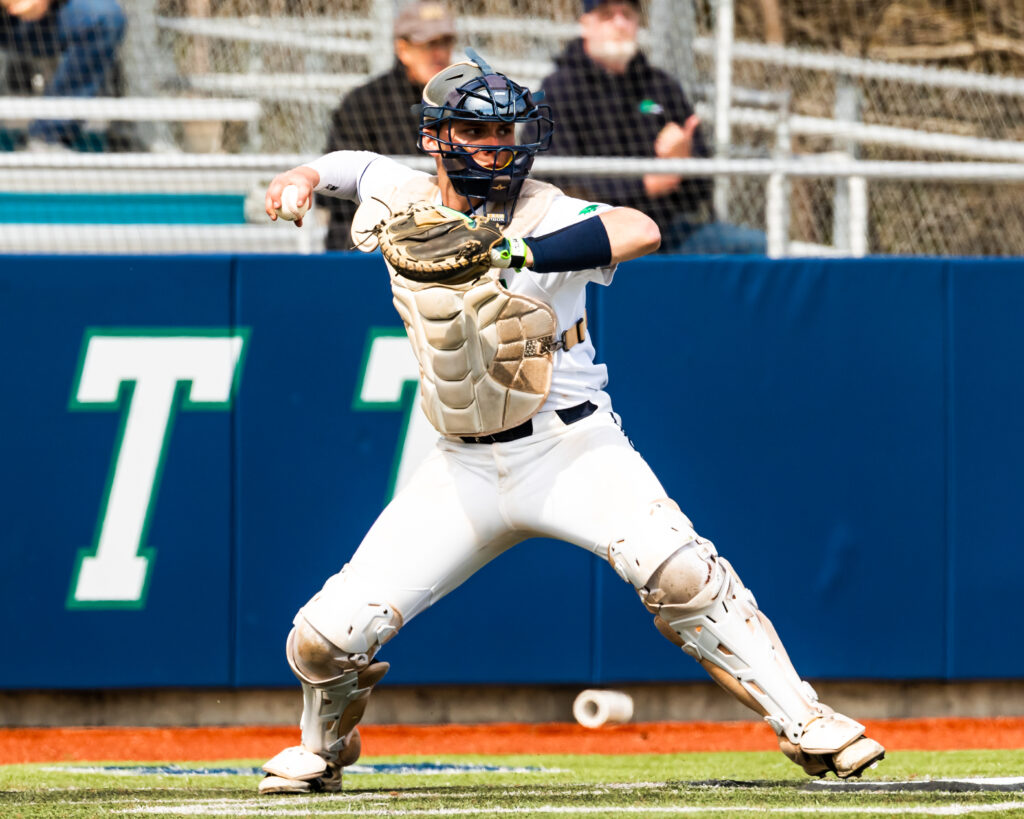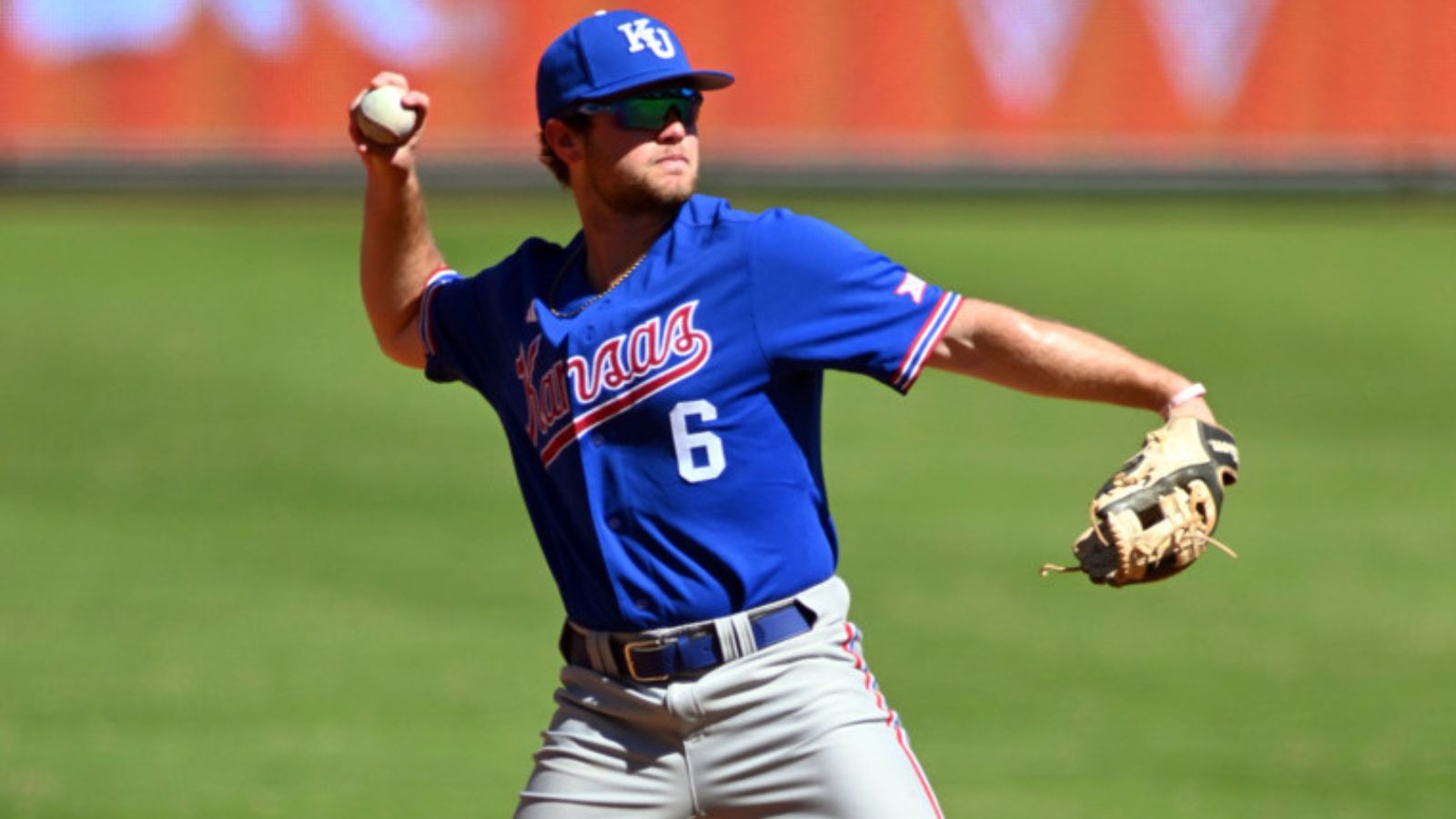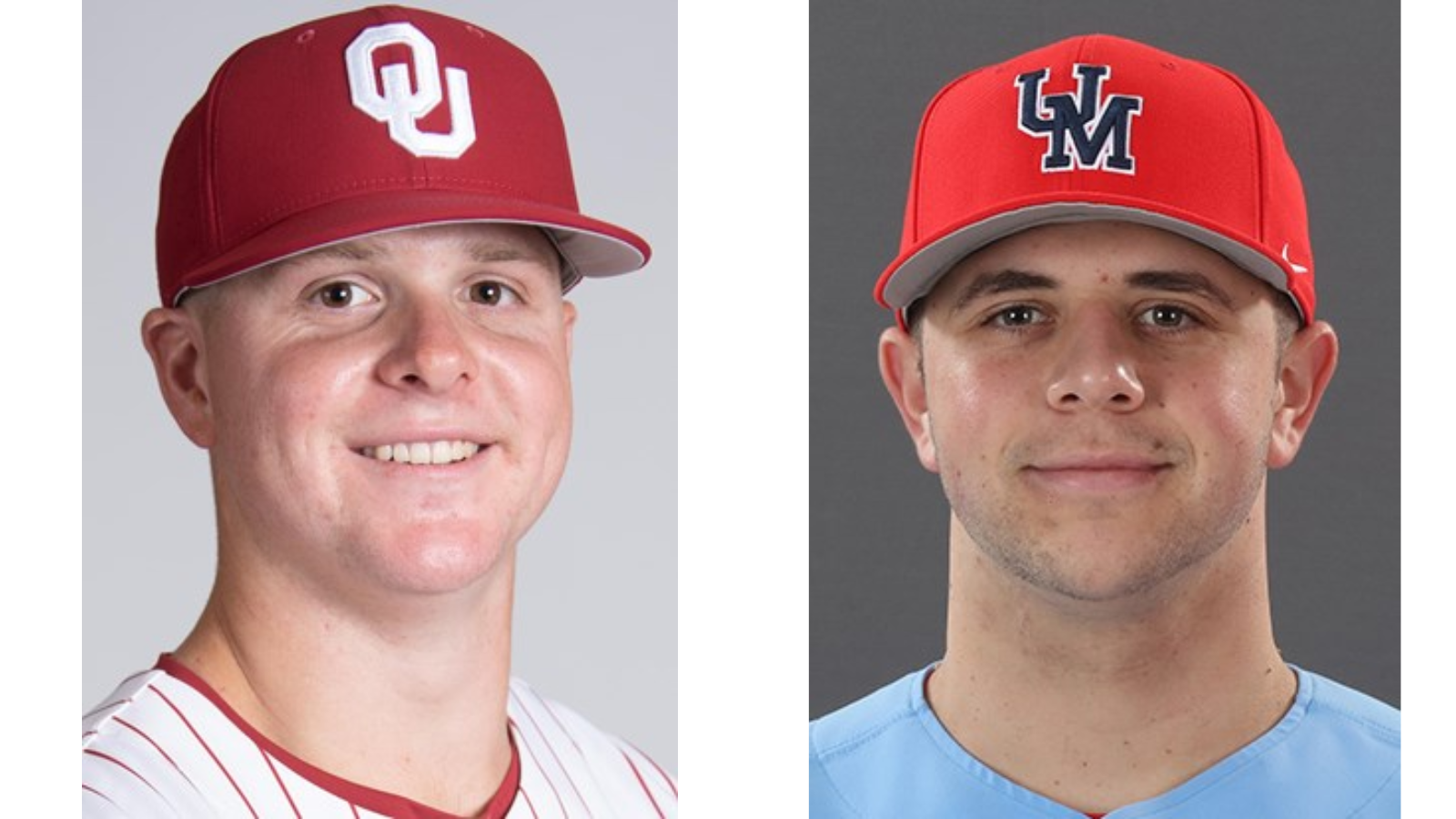Photo by David Le
John Mulready is one of the best college catchers you probably don’t know much about. The Peabody, Mass. native is a senior at Endicott College, a Division III program in Massachusetts that last year went to that level’s College World Series. Mulready won a ABCA/Rawlings College Baseball Gold Glove Award for his work behind the plate.
We spent a good part of 2023 talking to coaches about teaching defensive excellence. So it makes sense that we also talk to players about what it’s like to learn defensive excellence. John is the third interview in our series.
Mark: What does defensive excellence mean to you?
John: Defensive excellence sums up the way you win baseball games. Having a sound defense both in front of and behind the plate is the key to winning championships.
Since a young age, I’ve always heard pitching and defense wins championships. And growing up playing a bunch of different sports, playing soccer, football and obviously baseball, I’ve always heard defense is one of the most important things on the field because if you can’t protect your own goal, net, plate, whatever sport it is, you’re not really gonna have a good chance to win that game,
Mark: Where did it all begin for you defensively?
John: My father got me involved at a really young age and baseball was something that clicked with me early. I fell in love with the game really fast and it fell in love with me at the same time. Every day I’d be in the backyard playing catch. He’d be throwing balls in the air, hitting me ground balls.
When I was 9 years old, he signed me up for an AAU program and every skills camp they had to offer. So aside from being in the backyard with him every day or going down to the batting cages with him for offensive work, he’d be signing me up and driving me to defensive clinics every day. And I’d just grind, defensive rep after rep. Kevin Kelly, now the head coach at our rival, Roger Williams University, used to run all of the defensive skills clinics.
Mark: When did you start catching?
John: I always wanted to be the pitcher or the shortstop as a kid. But one day we needed a catcher, and nobody wanted to step up, so I was like, I’ll do it.
I shied away from catching for a bunch of years and focused on pitching. When I got to high school, I went to St. Mary’s and played for Derek Dana, who got drafted as a catcher by the Giants. Having a catcher as a coach in high school is amazing.
Coach Dana knew that I caught here and there growing up, and we talked and decided that I would transform back to being a catcher after a couple of injuries to my shoulder.
And then coach (Bryan) Haley and (Harry) Oringer at Endicott have been a big part of my development since I got to college.
Mark: What was the hardest thing to learn as you were getting into it?
John: Getting back into it was definitely difficult because I didn’t know everything that went into it.
When I was younger, everything was easy. I was always one of the bigger kids, always had a strong arm.
High school, You’re taking foul balls off the mask, you’re blocking balls in the dirt, you’re throwing just as much as the pitcher is, which takes a toll on your arm. Understanding the amount of endurance and physical preparation that goes into being able to catch a full season was eye opening to me, but something I was able to adjust to well by being with such an experienced coach. I’ve worked on knowing that it’s not always gonna be pretty, but that you’ve gotta be a beast behind the plate.
Mark: You’ve gotta be a beast behind the plate. What does that mean?
John: The way I look at it is if any ball gets by me, it’s my fault and I don’t want to let my teammates down. You give your team the best chance to win by working hard on every pitch, getting your eyes behind the ball to give the umpire the best chance to call a strike. You want to be a beast in every aspect of the position.
Mark: Explain some of what you do technique wise in the different aspects of catching.
John: The catchers call ourselves Team 2. And we’ll dedicate certain days of the week to receiving. We’ll dedicate certain days of the week to blocking, so on and so forth. We’re putting our full attention and focus into that day and really taking everything that we can from that day and translating that to game scenarios.
If we’re blocking balls, we’re not just blocking balls right at us, we’re trying to block the balls that nobody should be able to get to. Preparing ourselves for real game scenarios, things that probably aren’t going to happen but might, that’s really important to me.
With framing we have different training mitts that we use, always catching the ball in between your pointer finger and thumb, right in the pocket of the glove, always keeping your eyes behind the ball, and shifting your shoulders rather than dropping the arms or reaching to a side.
Framing is rhythmic. It’s just something that you get into a rhythm of doing. It just becomes second nature after so many reps.
Before a game we work to get our eyes loose, just like we get our bodies and arms loose.
Mark: What do you do to get your eyes loose?
John: Just progressions of receiving, working from bare hands to gloves, working up to the pitching machine, working on footwork and transfers from glove to hand.

Photo by David Le
Mark: What does your pre-game routine look like?
John: The catchers will be off to the side, playing receiving games like two ball to work on our hand-eye coordination.
With two ball, you have a ball in your hand, you’re in a circle of four or five people, everybody has a ball in their hand, and then there’s one other ball that you throw around the circle.
If a ball’s coming at you, you’ve got to catch it with your empty hand and throw the ball that’s in your other hand at somebody else. And it’s just like a speed reaction, hand-eye coordination drill. Then, after batting practice is over, some guys will go into our field house and work on light blocking. Working your breath. Exhaling while blocking has really helped me. It softens up your chest and kills the ball when it hits you and leaves the ball right in front of you.
We’re always working our hands. Another thing we do is throw a ball up in the air and just work on finding that four-seam grip to give us the best chance of throwing a strike down to second base.
Mark: What’s an example of something you do to manage a pitching staff?
John: I’m fortunate to be given the ability to call the game from behind the plate. I put myself in the shoes of the batter and with the count in mind, thinking of where they are in the batting order, what type of hitters are at the plate. The first time through the lineup, especially for a team we haven’t played in a while or never played before, it’s just about feeling it out and trying to get on the same mental wavelength as the pitcher.
Mark: Is there one play you’ve made that stands out?
John: We were playing Pomona-Pitzer on our California trip over spring break. It was a dogfight. We go ahead by a run in the ninth inning and in the bottom of the ninth, man on second, base hit up the middle, the guy’s rounding third, our center fielder comes up firing. It’s a tweener-hop and it takes a funny hop but I’m able to stay down. There’s a pretty big collision at home plate and I hang on to the ball (watch the play here).
That’s a thing I struggled with in high school. I can remember my sophomore year, the same type of play in a tie game, and throw is a tweener hop that squeaks by me. They end up walking us off.
Taking pride and taking care of the ball and the little things like short hops, tweener hops, long hops working on those for so long, I feel like it translated into finding success on that play.
Mark: When there’s a play like that, what do you see?
John: I’m able to see the whole field, which is obviously one of the main reasons I love the position. But in my head, I’m trying to think two plays ahead, if this guy hits it here what am I calling? Where am I going? Is the play coming home? Is the play going to second? Do we not have a chance for this guy?
I see a guy on second base who’s got a short lead, so we end up going fastball, we challenge the guy up, and he ends up turning it right around, up the middle, I’m thinking, oh boy, there we go, because it wasn’t hit too hard, we were playing kind of shallow. So I’m like, alright, we’ve got a chance here.
And having the center fielder we did, Caleb Shpur has an absolute cannon for an arm. I threw my mask off. I’m thinking, all right, I’m checking in with the runner on third. He’s rounding third. And I’m thinking all right, we’ve got a chance.
We have calls whether to cut off the ball or throw straight through. And so I saw the ball. It’s a nice low throw looking like it’s gonna be a nice long hop. So I’m screaming ‘let it go.’ I see the guy digging. He tried to dive on the inside of the plate, but the ball took me that way.
From where the hop was coming, I was able to grab the ball with my glove and I immediately put my hand onto the ball obviously, just trying to hold the ball through contact. The kid’s shoulder goes in between my legs and knocks my glove off my hand, but I held onto the ball with my throwing hand and was able to show that to the umpire.
I got up and spiked the ball and we had a little celebration on the mound. There’s just so many thoughts going through my head. But at the same time it was completely shut off and I was just so focused on tracking that ball from the tweener hop into my glove and just so focused on holding on to the ball
Mark: Are there catchers who you model your game after?
John: I model part of my game after coach Dana with the things he taught me. In terms of major league catchers, J.T. Realmuto is one of my favorites. Everything he does is smooth as silk. A 1.8 pop time (on stolen base attempts) is ridiculous. All the catching coaches I follow on Twitter and Instagram are preaching ‘be like J.T.’ He plays the game smooth and fast.
Mark: If a kid said that they wanted to catch the way that you caught, what advice would you give them.
John: Obviously the first step is just to work hard and every day you show up, don’t just be there to be there or be there to show somebody else you’re there. You have to want to be successful. It’s not one of those things like hitting where you can stick your bat out and find a hole. Being behind the plate you’re involved in every pitch and can’t take a pitch off.
Everybody’s looking at you to tell them what to do because you can see what they can’t see. There’s just as much of a mental aspect to it as there is a physical aspect.


